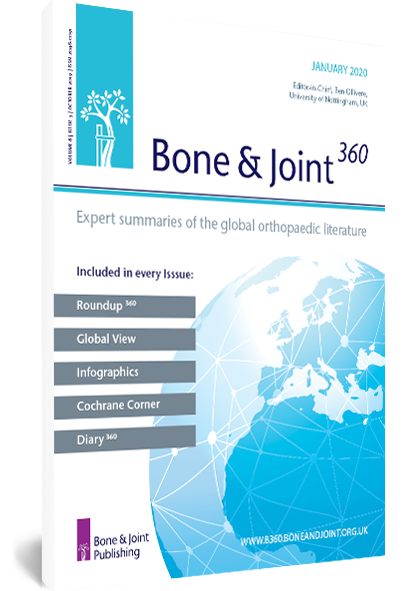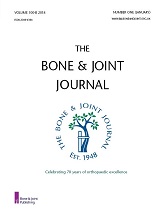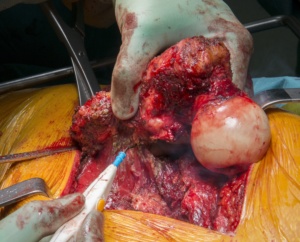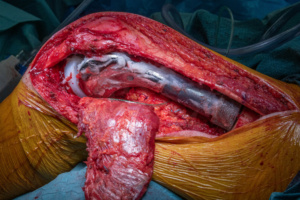Orthopaedic Oncology
“The World is not limited by IQ. We are all limited by bravery and creativity”
Entrepreneur, Computer scientist & Author.
The names and achievements of most of the 20th Century Orthopaedic giants are well known to all. Barely a professional conversation can still be had about total hip replacement without the mention of Sir John Charnley or in knee replacement John Insall. In trauma the legacy of Maurice Muller and the AO Group in transforming the science and surgical armamentarium for orthopaedic fracture management sits easily alongside the individual genius of Gregor Ilizarov in limb salvage.
The orthopaedic conditions to which they dedicated their lives were very common ones and their landmark innovations have been “scalable” (in todays’ jargon) and lent themselves to widespread adoption by the lesser surgeons amongst us who followed.
Both the former are key factors in of course the impact of their work and but also their recognition by the profession.
In contrast, musculoskeletal tumours are very uncommon conditions for which the best results have been achieved only by concentrating the required experience in very few highly specialised units worldwide. Mastery of the surgical techniques required, and the experience and logistics needed to obtain the best outcomes, is not something that lends itself to widespread dissemination with such rarities. With an annual incidence of about 9/million population in the United Kingdom, the most common bone tumours are osteosarcoma, chondrosarcoma and Ewing’s sarcoma, though soft tissue sarcomas are more common than bone tumours.
An inevitable result of these facts means that the pioneers of Orthopaedic Surgical Oncology, whose achievements are every bit as noteworthy, remain far less known and celebrated outside the sub-speciality. Arguably, there will even be Orthopaedic Surgeons who do not appreciate that the genesis of the endoprosthetic replacements that have also transformed revision joint replacement across the Globe, was the result of a collaboration between two Orthopaedic Surgeons, one at the Royal Orthopaedic Hospital in Birmingham and one at the Royal National Orthopaedic Hospital, Stanmore, UK, in the late 1970s. At that time the outlook for patients with bone tumours was dismal with a very high mortality and morbidity rates and the default operation generally was amputation. At the Royal Orthopaedic Hospital in Birmingham, Rodney Saville Sneath, and at the Royal National Orthopaedic Hospital in Stanmore, Professor John Scales (Professor of Bioengineering) refused to accept the status quo and set about founding the principles of modern Limb salvage surgery in orthopaedic oncology. They collaborated on the concept, design and successful execution of large endoprostheses as a viable alternative to amputation.
Since the first endoprosthesis was implanted by Rodney Sneath at the Royal Orthopaedic Hospital, Birmingham, in 1970, the surgical landscape for orthopaedic oncology patients has been progressively transformed. Where once amputation was the only option now its indication has been reduced to approximately 15% of primary and recurrent disease cases.
In 1976 these two pioneers also developed the first “growing” endoprosthesis for use in children, thereby reducing the number of recurrent operations required, a huge benefit in itself to such a traumatised group. The prostheses and techniques they developed have continued to evolve based on ongoing rigorous study and research into these conditions, uniquely supported in Birmingham by the largest musculoskeletal oncology database in the world, set up by Robert Grimer, Simon Carter and and Roger Tillman, and continued by their successors.
This month from the Bone & Joint Journals’ back catalogue, we are delighted to republish two excellent overview articles, one from the Royal Orthopaedic Hospital in Birmingham and the other from the Nuffield Orthopaedic Centre in Oxford.
Professor Robert Grimers’ and Professor Lee Jeys’ succinct overview (written for the non-tumour specialist) of the role of limb salvage surgery is both a quick read and also definitive and highly informative. Allograft, Autograft, EPR and Allograft EPR combinations are all covered including some headline, referenced results which give a very useful perspective.
Another short and excellent read is from MS Patel, NC Easley & Professor Robert Ashford at the Nuffield Orthopaedic Centre in Oxford, the focus of whose article is soft tissue sarcomas. This should be a read and re-read article to remind all orthopaedic surgeons what a trap for the unwary soft tissue sarcoma can be. Their article emphasises the need for a high degree of vigilance with all soft tissue lumps. Though the rate of presentation of a benign soft tissue lesion to a soft tissue sarcoma is 100-1, this is not so rare that it will not be encountered on a number of occasions in an orthopaedic surgeon’s career. Early diagnosis and the onward referral to specialist units is key as this article reminds us, given size at presentation equates to outcome.
It has been difficult to select only two operations from our own bone and soft tumour techniques, which were recorded at the Royal Orthopaedic Hospital in Birmingham, and in the main have been the dedicated work of Jonathan Stevenson over the last five years. Though the surgical instruction itself is only going to be applicable to the few, the detailed end to end insight into the thought processes as well as protocols and distilled lessons from one of the world’s pre-eminent orthopaedic bone tumour units needs to be read.
On OrthOracle there are over 40 highly detailed bone and soft tissue tumour techniques across a spectrum that includes primary and revision cases as well as reconstruction for metastatic disease. Our content continues to grow and includes upper and lower limb endoprostheses, primary revision cases as well as massive Allograft transplantation and vascularised bone transfers. I invite you to gain insight from them all.
The Bone and Joint Journals back catalogue contains a wealth of over 800 peer reviewed academic papers in orthopaedic oncology alone, from 1948 to date, and full access is a professional must for any practicing Orthopaedic Surgeon.
Mark Herron
Managing Editor OrthOracle





















